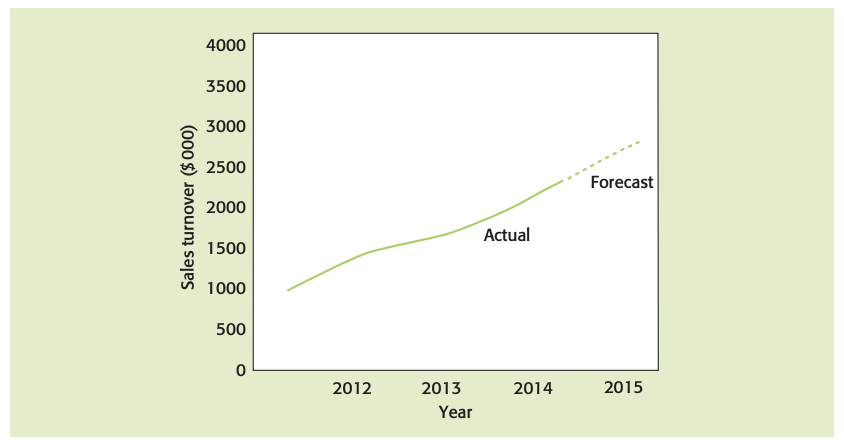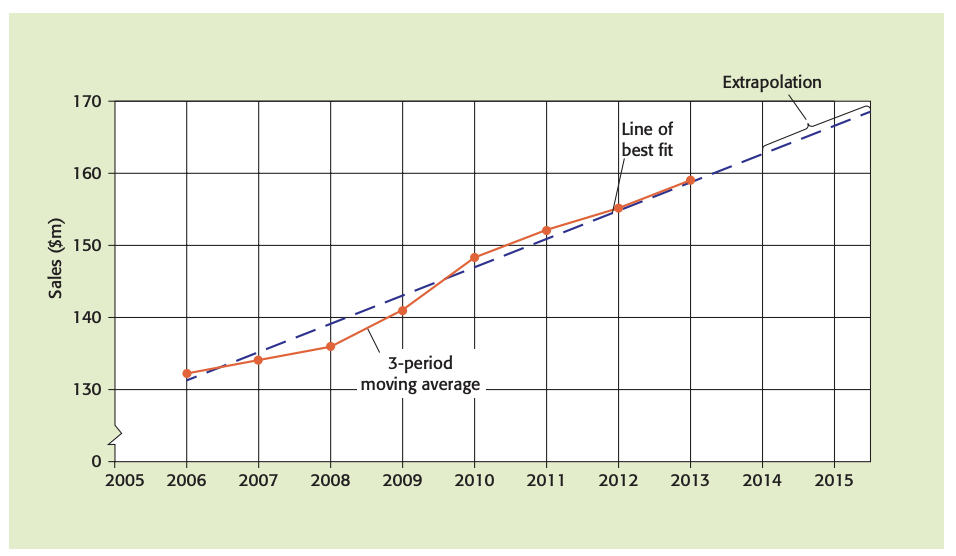4.3 Sales forecasting
Introduction - sales forecasting
- Sales forecasting: predicting future sales levels and sales trends.
Quantitative sales forecasting methods - time-series analysis
Extrapolation involves basing future predictions on past results.

- Moving averages
- Seasonal variations: regular and repeated variations that occur in sales data within a period of 12 months or less.
- Cyclical variations: variations in sales occurring over periods of time of much more than a year they are related to the business cycle.
- Random variations may occur at any time and will cause unusual and unpredictable sales figures, e.g. exceptionally poor weather, or negative public image following a high profile product failure.

Four-period moving average: the most widely used technique as it’s often employed when forecasting from quarterly data. Much macro-economic data is released quarterly, but if it’s collected as monthly sales then a 12-period moving total can be used.
Forecasting using the moving average method
- Plot the trend (moving average) results on a time-series graph.
- Extrapolate this into the future short-term extrapolations are likely to be the most accurate.
- Read off the forecast trend result from the graph for the period under review.
- Adjust this by the average seasonal variation for quarter 2.